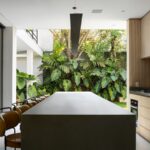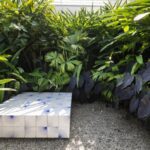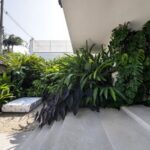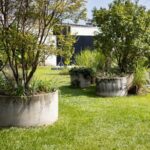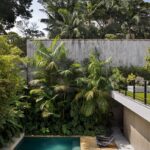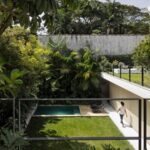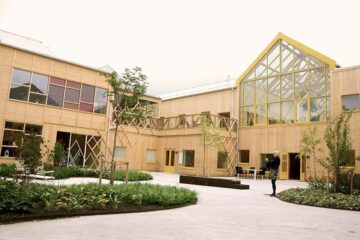Embracing Nature: Jacupiranga Garden
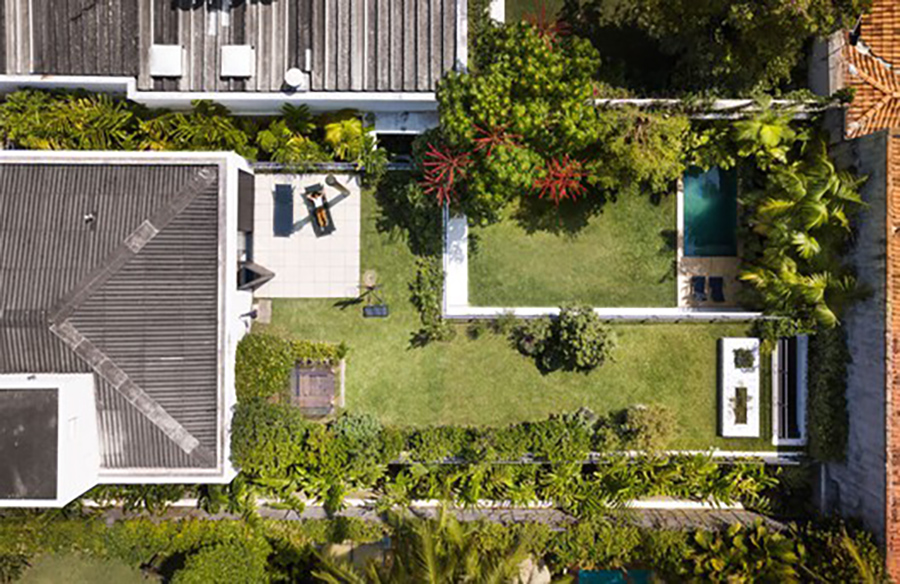
The Jacupiranga Garden, designed by Gabriella Ornaghi e Bianca Vasone Arquitetura da Paisagem, stands as a testament to the seamless integration of landscape architecture with the vibrant ecosystem of São Paulo, Brazil. Through a meticulous blend of native tropical plants and species indigenous to the Atlantic Forest biome, the project seeks to forge a harmonious connection between the built environment and its natural surroundings, while also enhancing the ecological and microclimatic conditions of the area.

Conceptual Framework
The landscaping approach employed in the Jacupiranga Garden is rooted in a methodology that embraces the rich biodiversity of the region. By incorporating a diverse range of tropical botanical compositions, the project aims to create a visually striking landscape characterized by lush vegetation, dynamic textures, and vibrant floral displays. This approach not only enhances the aesthetic appeal of the space but also fosters a sense of connection with nature for the residents.
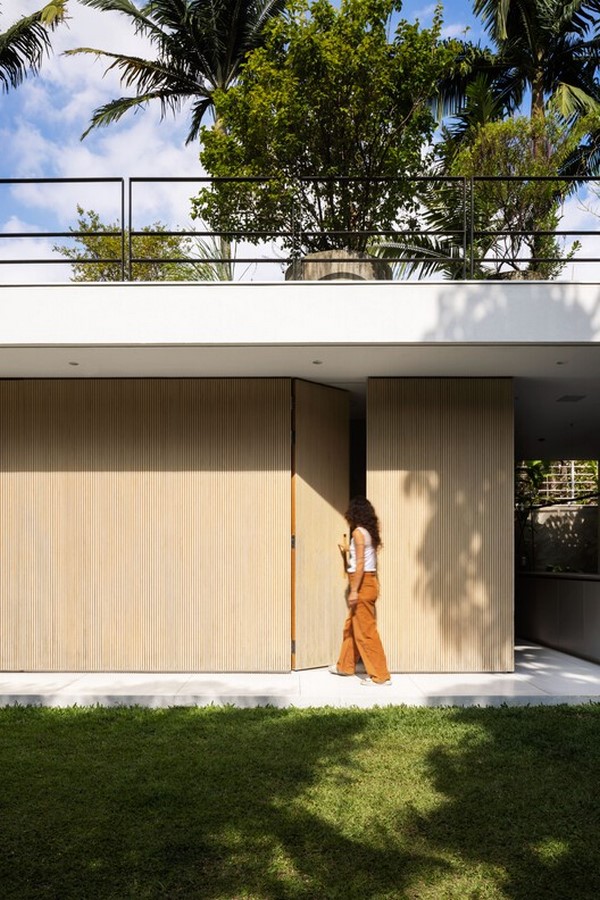
Botanical Diversity
Central to the design of the garden is the strategic layering of vegetation, with tree specimens serving as focal points that define visual axes and modulate light conditions. Underneath the canopy, a rich tapestry of herbaceous and shrubby plants thrives, creating a multi-dimensional landscape that evolves with the changing seasons. The integration of native plant species not only celebrates the region’s botanical heritage but also promotes biodiversity and ecosystem resilience.

Artistic Elements
Complementing the botanical diversity are visual and architectural elements that add depth and character to the garden. Graphic tiles, strategically incorporated into the structure, serve as artistic accents that unify the design language of the project. These cohesive design elements create a sense of continuity and identity throughout the space, enhancing its visual appeal and inviting exploration.
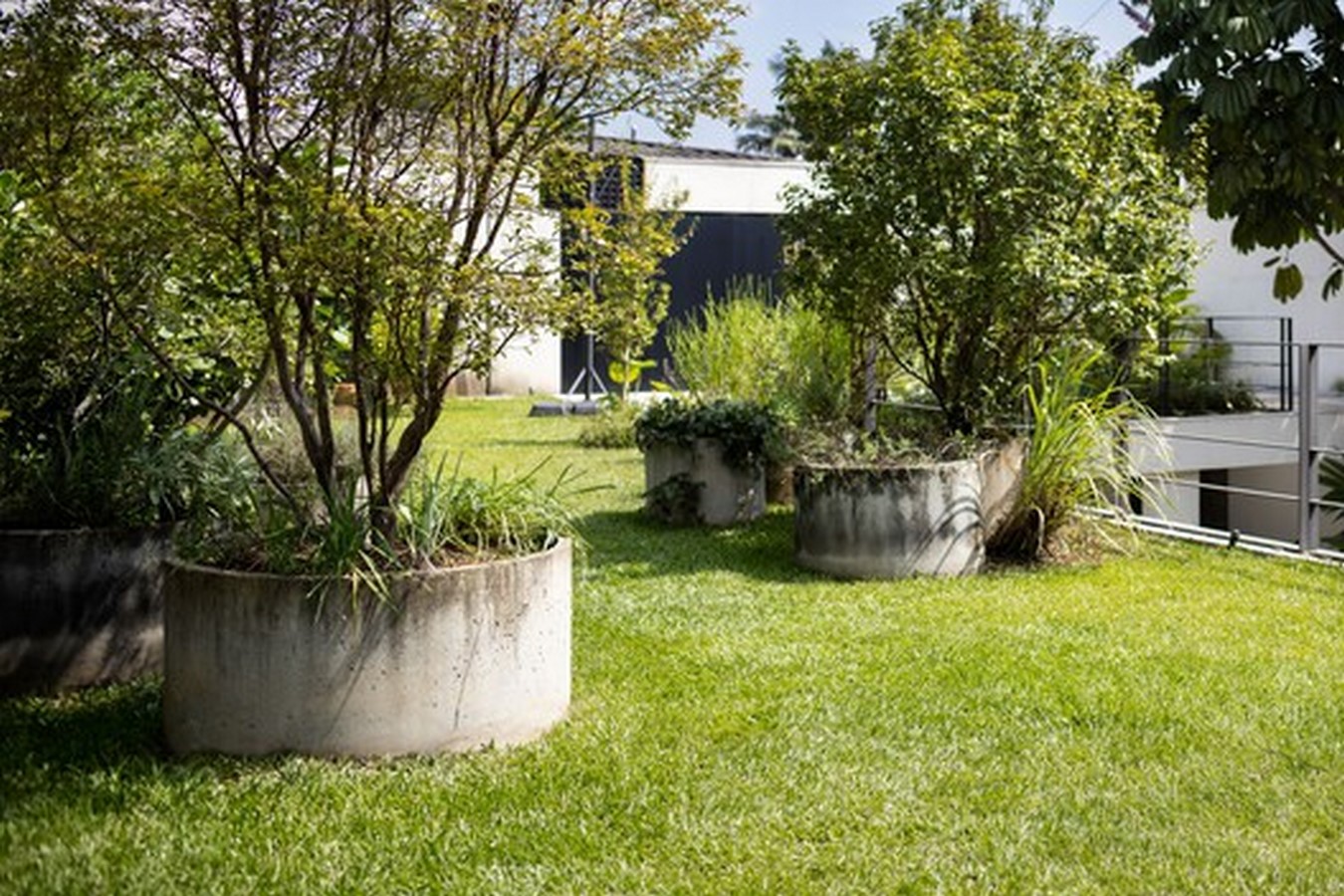
Functional Integration
Beyond its aesthetic value, the Jacupiranga Garden is designed to be a functional and inviting space for residents to enjoy. The incorporation of recreational amenities, such as a pool deck and seating area, seamlessly integrates leisure opportunities into the natural landscape, fostering social interaction and relaxation.

Sustainable Practices
An emphasis on sustainability underpins the design philosophy of the Jacupiranga Garden. The upper floor features an edible garden, showcasing a variety of oil-producing, medicinal, aromatic, and edible plants organized in a landscape manner. This edible garden not only promotes self-sufficiency and food security but also serves as a living laboratory for environmental education and sustainable living practices.

Conclusion
In essence, the Jacupiranga Garden represents a harmonious convergence of art, nature, and functionality. By celebrating the region’s biodiversity and cultural heritage, while also embracing sustainable design principles, the project exemplifies the transformative potential of landscape architecture in creating vibrant and resilient urban environments. As a verdant oasis in the heart of São Paulo, the Jacupiranga Garden invites residents to reconnect with the natural world and forge a deeper appreciation for the ecosystems that sustain life.






